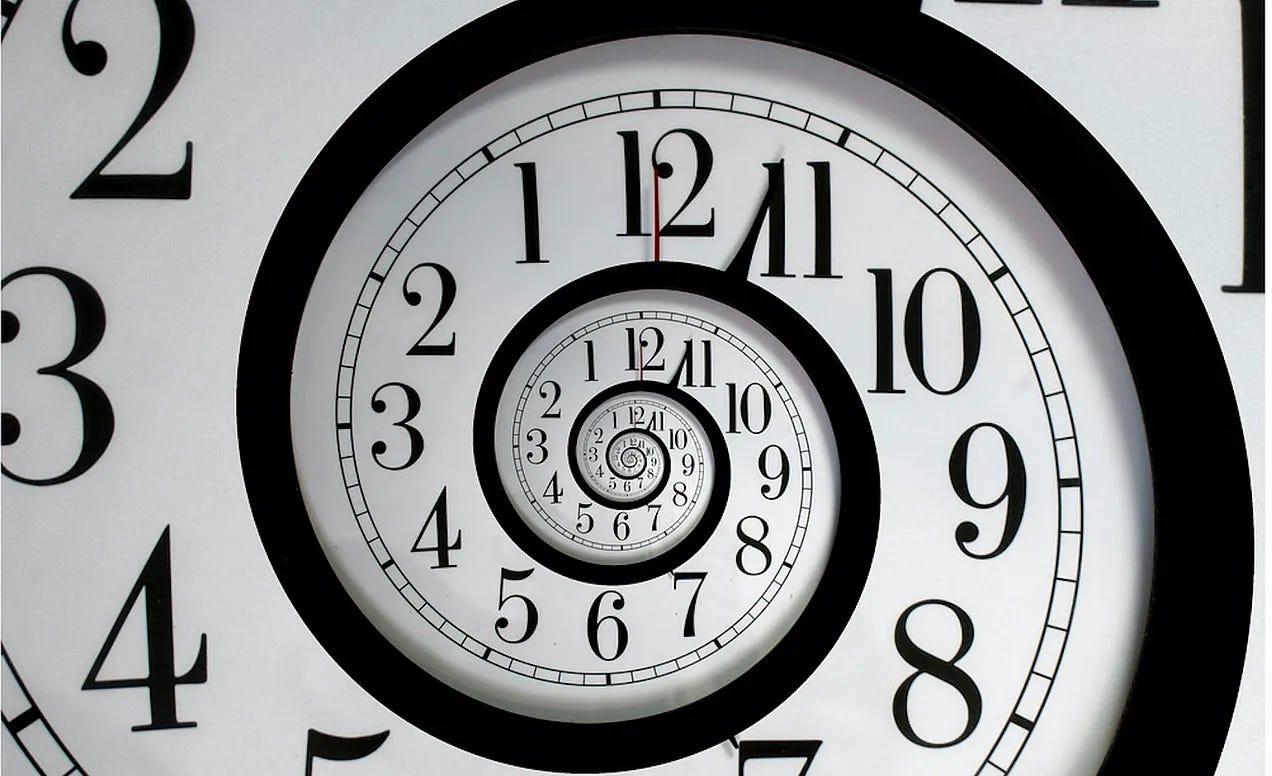The Rhythm of Attention
Dance, and then take a break. Repeat. The ideal way to shape your day.
This is an installment in the How To Use Time newsletter, which is leading to a booklet of the same name. This series — and the resulting booklet — are for paid subscribers as a special benefit.
What is the shape of time?
Is time a stream of sequential moments? Is it a 7 by 24 array of hours? Is it a procession of seasons, each following another? Or is time an unmoving tableau before which we march, serving as a backdrop to our motion? Is time a force to be reckoned with, or an ally that supports our aims?
How we envision time can determine how we make use of time, how we navigate via the clock and the calendar, and how we find our place in it.
We are all aware that time seems inconstant. How it seems to drag when we are bored, or trapped in an airport waiting for a delayed flight. Or how quickly time seems to pass when we are happily entertaining friends, spending a long weekend at the beach, or engaged in rewarding activities. Time alternately dilates or contracts, based on the context of our state of mind.
Keep reading with a 7-day free trial
Subscribe to workfutures.io to keep reading this post and get 7 days of free access to the full post archives.

